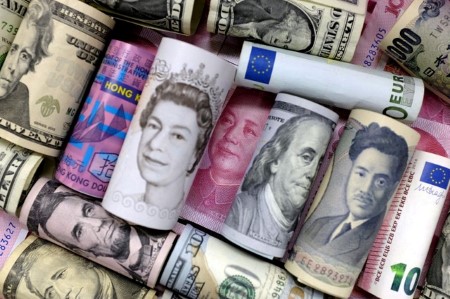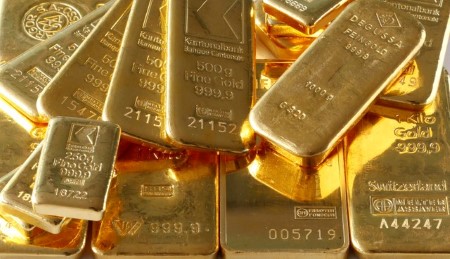March 3 (Reuters) – The reward for holding US stocks over Treasury bonds has not been this unattractive since 2004, possibly setting the stage for the sought-after 60/40 portfolio diversification to make a comeback after one of its worst years on record.
A 60/40 portfolio, which typically has 60% of its holdings in stocks and the remaining 40% in fixed income, counts on moves in the two asset classes to offset one another, with stocks strengthening amid economic optimism and bonds rising during turbulent times.
The strategy took a backseat in 2022 as the Federal Reserve raised interest rates aggressively to rein in inflation. However, signals from the stock and bond markets this year are pointing to a return of the popular asset allocation strategy.
At the end of February, the S&P 500 returned 5.41% in earnings yield, the reciprocal of price-to-earnings ratio, while the yield on the benchmark US 10-year bond surged to 3.94%, according to data from Refinitiv. The 1.47 percentage-point difference is the lowest upside stocks have held over bonds in nearly two decades.
Earnings yield here refers to the S&P 500 earnings per share estimate for the next 12 moths divided by the index price.
“The relative shine of equities is definitely dulled by rising yields across the Treasury curve,” said Eric Leve, chief investment officer of wealth and investment management firm Bailard.
With estimates for earnings in 2023 implying essentially no growth over 2022, rates above 5% on short-term bonds and 10-year yields on the verge of 4% represent credible alternatives to stocks, according to Leve.
The thinning spread between returns from stocks and bonds is set to bring the 60/40 portfolio strategy back in favor.
“This strategy does provide excellent hedging in current environment,” said Glenn Yin, Head of Research and Analysis at AETOS Capital Group.
The 60/40 portfolio has already had the best start to the year since 1991, according to Bank of America.
The Fed’s move to tighten monetary policy at the fastest pace in decades pumped up bond yields after nearly two years of near-zero interest rates.
But a rise in yields poses headwinds for equities, especially growth stocks, and by extension, a large index like the S&P 500. Apple (AAPL), Alphabet (GOOGL) and Amazon.com Inc (AMZN) are among the tech heavyweights that make up nearly a fifth of the index and bore the brunt of a sell-off last year.
“Equity yields will continue to struggle this year as both prices and earnings decline” amid an economic slowdown, said Lance Roberts, Chief Investment Strategist at RIA Advisors.
On the other hand, “during a recession, yields will fall and Treasury bond prices will rise,” said Roberts. He prefers bonds over stocks today, he added.
Recent results and guidance from companies have bolstered the case for investors who believe the stock market’s early-year rally is unlikely to last.
As of Feb. 24, results from 465 of the S&P 500 companies showed fourth-quarter earnings are estimated to have fallen 3.2% from the year-ago quarter while Wall Street’s expectation for S&P earnings growth for 2023 fell to 1.7% from an expected 4.4% on Jan. 1, according to Refinitiv.
Expectations for US earnings to decline in the first two quarters if the year come amid weaker-than-expected fourth-quarter results for 2022, which Credit Suisse estimates will be the worst earnings season outside of a recession in 24 years.
Investors are hoping that in case of a severe recession, the Fed would be forced to slash interest rates. While the economic downturn would hit stock returns, drop in bond yields should provide some relief in such a scenario, according to analysts.
“For me, the best risk-reward portfolio in this environment for now is long duration Treasury bonds, and deep value, dividend equities,” Roberts said. Deep value refers to stocks that are trading at a huge discount to their intrinsic values.
“When the recession arrives, and the Fed cuts rates to zero, I will sell my bond portfolio to lock in the capital appreciation and buy distressed equities with high yields and companies with strong balance sheets and earnings growth,” he added.
(Reporting by Mehnaz Yasmin in Bengaluru; Editing by Alden Bentley and Saumyadeb Chakrabarty)







 DOWNLOAD
DOWNLOAD







